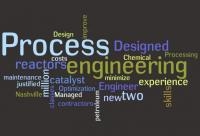1. An Engineering company undertook design and construction of a fertilizer factory. No ammonia storage was installed. As a result, the start up of the plant delayed two years (probably 1960s).
2. Piping of a new alumina plant was ordered. Just before shipment, an engineer of the owner found out that supplier had considered operating pressure instead of design pressure for all piping parts and components. Necessary parts were replaced. Delay was unexpectedly rather short (~late 1970s).
Note: I think design pressure is expressed by other data in piping components, but that is how the info came.
3. Process data sheet of a vessel was ready for distribution. During photocopying a fly (that insect) dirtied the original paper, converting design pressure from (say) 50 barg to 5.0 barg. The vessel arrived with a design pressure of 5.0 barg and was useless (1980s).
4. In a fertilizer plant, ammonia and phosphoric acid were introduced into the reaction vessel through separate pipes. These pipes were replaced by multiple injectors. Each injector received both fluids to facilitate their mixing. But back flows were not taken into account. When phosphoric acid pump stopped for some reason, ammonia gas came into the phosphoric acid pipes, overheated by the reaction. Some parts of pipes were destroyed (late 1970s).
5. In a fertilizer plant, we prepared the sulfuric acid steel pipes for maintenance. At the end we cleaned them with water. Explosions occurred as soon as welding started on them. The steel pipes transferred H2SO4 96%, not attacking steel. When we washed then with water, the remaining H2SO4 was diluted, attacked steel, and produced H2. We did not purge the pipes with nitrogen after washing (1979, kkala participated). Well, this error concerns the preparation for maintenance, not the design.
A Turkish proverb says that "after the chariot is broken, a lot of people will advise how to prevent it". But it should have been before, not after.
[info]I think number 3 is my favorite![/info]
Edited by Chris Haslego, 19 January 2012 - 09:02 PM.

 FB
FB












